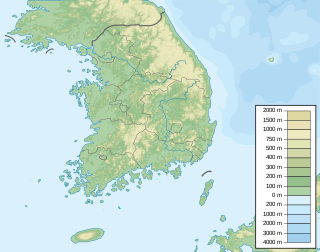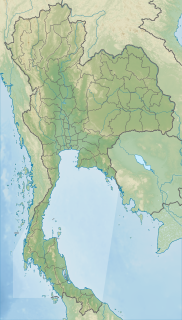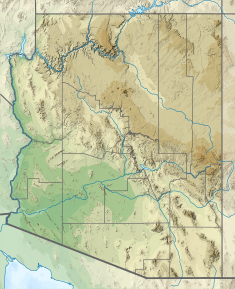
Newsprint is a low-cost, non-archival paper consisting mainly of wood pulp and most commonly used to print newspapers and other publications and advertising material. Invented in 1844 by Charles Fenerty of Nova Scotia, Canada, it usually has an off white cast and distinctive feel. It is designed for use in printing presses that employ a long web of paper, rather than individual sheets of paper.

Pulp is a lignocellulosic fibrous material prepared by chemically or mechanically separating cellulose fibers from wood, fiber crops, waste paper, or rags. Mixed with water and other chemical or plant-based additives, pulp is the major raw material used in papermaking and the industrial production of other paper products.

Fiber crops are field crops grown for their fibers, which are traditionally used to make paper, cloth, or rope.

The recycling of paper is the process by which waste paper is turned into new paper products. It has a number of important benefits: It saves waste paper from occupying homes of people and producing methane as it breaks down. Because paper fibre contains carbon, recycling keeps the carbon locked up for longer and out of the atmosphere. Around two-thirds of all paper products in the US are now recovered and recycled, although it does not all become new paper. After repeated processing the fibres become too short for the production of new paper - this is why virgin fibre is frequently added to the pulp recipe.

The Apache Railway is an Arizona short-line railroad that operates from a connection with the BNSF Railway at Holbrook to the Snowflake Mill near Snowflake, Arizona, 38 miles (61 km). The APA was acquired by Catalyst Paper from Abitibi Consolidated in 2008. The Snowflake paper mill shut down permanently on September 30, 2012. In late 2015, the railway was purchased out of bankruptcy by a group including Aztec Land & Cattle Company and Midwest Poultry Producers, L.P., thereby avoiding a shutdown and scrappage of the line. The railway continues to operate, and its revenues are driven primarily by car repair and storage. The railway's freight revenues have not yet recovered from the shutdown of the Snowflake paper mill then owned by Catalyst, although efforts to enhance them continue.

Catalyst Paper Corporation is a pulp and paper company based in Richmond, British Columbia. It operates five pulp mills and paper mills, producing a combined 1.8 million tonnes of paper and 491,000 tonnes of market pulp annually. The mills mostly produce magazine paper and newsprint.
Norske Skog Skogn AS is a pulp mill and paper mill situated in Levanger, Norway, which produces newsprint. Situated on the Fiborgtangen peninsula in Skogn, the mill has three paper machines with a total annual capacity of 600,000 tonnes. Pulp is produced both from virgin fibers at an on-site thermomechanical pulp (TMP) mill and from recycled paper at a deinking (DIP) mill. Part of Norske Skog, it is the sole remaining newsprint mill in Norway.

Parenco B.V. is a paper mill located in Renkum, Netherlands, on the shore of the Rhine. The mill was established on the site of an older mill in 1912 by Van Gelder & Zonen. The company operates two paper machines PM1 and PM2. PM1 has a capacity of 265,000 tonnes per year and is used for the production of so-called SC-B paper for magazines and advertising brochures. The other machine, PM2, was idled in 2009 by its then owner due to the declining demand of newsprint paper. This machine will be converted and from mid-2016 will produce about 385,000 tons of packaging paper, intended for the production of corrugated board.
Myllykoski Corporation was a family owned international paper group with central offices in Helsinki and Anjalankoski, manufacturing in Germany, Finland and North America, and sales offices around the world. The roots of the company date back to its founding by the Björnberg family in 1892. The company was acquired in 2011 by Finnish manufacturer UPM-Kymmene.

Paper is a thin sheet material produced by mechanically or chemically processing cellulose fibres derived from wood, rags, grasses or other vegetable sources in water, draining the water through fine mesh leaving the fibre evenly distributed on the surface, followed by pressing and drying. Although paper was originally made in single sheets by hand, almost all is now made on large machines—some making reels 10 metres wide, running at 2,000 metres per minute and up to 600,000 tonnes a year. It is a versatile material with many uses, including printing, packaging, decorating, writing, cleaning, filter paper, wallpaper, book endpaper, conservation paper, laminated worktops, toilet tissue, currency and security paper and a number of industrial and construction processes.
Deinking is the industrial process of removing printing ink from paperfibers of recycled paper to make deinked pulp.

The Great Lakes Paper Company was the operator of the largest and most modern pulp and paper manufacturing facility in the world. The Company employed over 4,000 in Northern Ontario, starting in 1924 as a pulp mill at Fort William, Ontario. Great Lakes had a highly developed social network within the company, including a children's Christmas party held at a local arena, and an annual picnic held at a local park, as well as many sports teams and other social groups. The company's working environment was enhanced by cultural diversity. For example under the Government of Canada's immigration policy, the "Close Relatives Scheme" resulted in over 400 Ukrainian refugees being employed as workers after World War II.
Kruger Inc. is a Canadian corporation which manufactures publication papers, tissue, lumber and other wood products, corrugated cartons from recycled fibres, green and renewable energy, and wines and spirits. Kruger Inc. operates facilities in Québec, Ontario, British Columbia, Newfoundland and Labrador, and the United States.

The environmental effects of paper are significant, which has led to changes in industry and behaviour at both business and personal levels. With the use of modern technology such as the printing press and the highly mechanized harvesting of wood, disposable paper became a relatively cheap commodity, which led to a high level of consumption and waste. The rise in global environmental issues such as air and water pollution, climate change, overflowing landfills and clearcutting have all lead to increased government regulations. There is now a trend towards sustainability in the pulp and paper industry as it moves to reduce clear cutting, water use, greenhouse gas emissions, fossil fuel consumption and clean up its influence on local water supplies and air pollution.

Crofton Mill is a pulp mill and paper mill located in the Vancouver Island town of Crofton, British Columbia. The mill has 3 paper machines and 2 pulp machines, which produce 349,000 tonnes of newsprint and directory paper, and 355,000 tonnes of northern bleached softwood kraft.

Elk Falls Mill was a pulp mill and paper mill located in the Canadian town of Campbell River, British Columbia, operating between 1952 and 2010. At the end of its life, the mill had three paper machines, with a combined annual production of 373,000 tonnes of newsprint and 153,000 tonnes specialized papers.

Powell River Mill is a pulp mill and paper mill located in the Canadian town of Powell River, British Columbia. Part of Catalyst Paper, the mill has three paper machines which produce 469,000 tonnes of newsprint and uncoated fine paper. The mill has 441 employees as of 2014.
Jeonju Paper Corporation, trading as Jeonju Paper, is a South Korean pulp and paper company. Headquartered in Seoul, it operates Jeonju Mill and Cheongwon Mill, with a combined 1,030,000 tonnes annual production of paper, mostly newsprint. The company is owned by Morgan Stanley Private Equity Asia and Shinhan Private Equity. The company was established as the South Korean operating subsidiary of PanAsia Paper on 1 February 1999, PanAsia Paper Korea. Ownership passed to Norske Skog in 2005, with the company becoming Norske Skog Korea. They sold the company to the current owners in 2008, after which the current name was adopted.

Jeonju Mill is a pulp mill and paper mill situated in Jeonju, South Korea. Owned by Jeonju Paper, the mill produces 850,000 tonnes of newsprint and magazine paper annually. The mill sources fibers both from virgin wood, including sawmill residue, as well as from deinking. The mill has four paper machines. The mill has the third-largest production capacity for newsprint in the world and the largest deinking mill in the world.

Singburi Mill is a pulp mill and paper mill situated in Sing Buri, Thailand. Owned by the CAS Group, the mill sources its fiber from deinking to feed a single paper machine producing newsprint. PM1 has an annual production of 125,000 tonnes. The mill had 239 employees in 2013, and was the sole manufacturer of newsprint in Thailand, approximately producing the entire country's consumption.


















